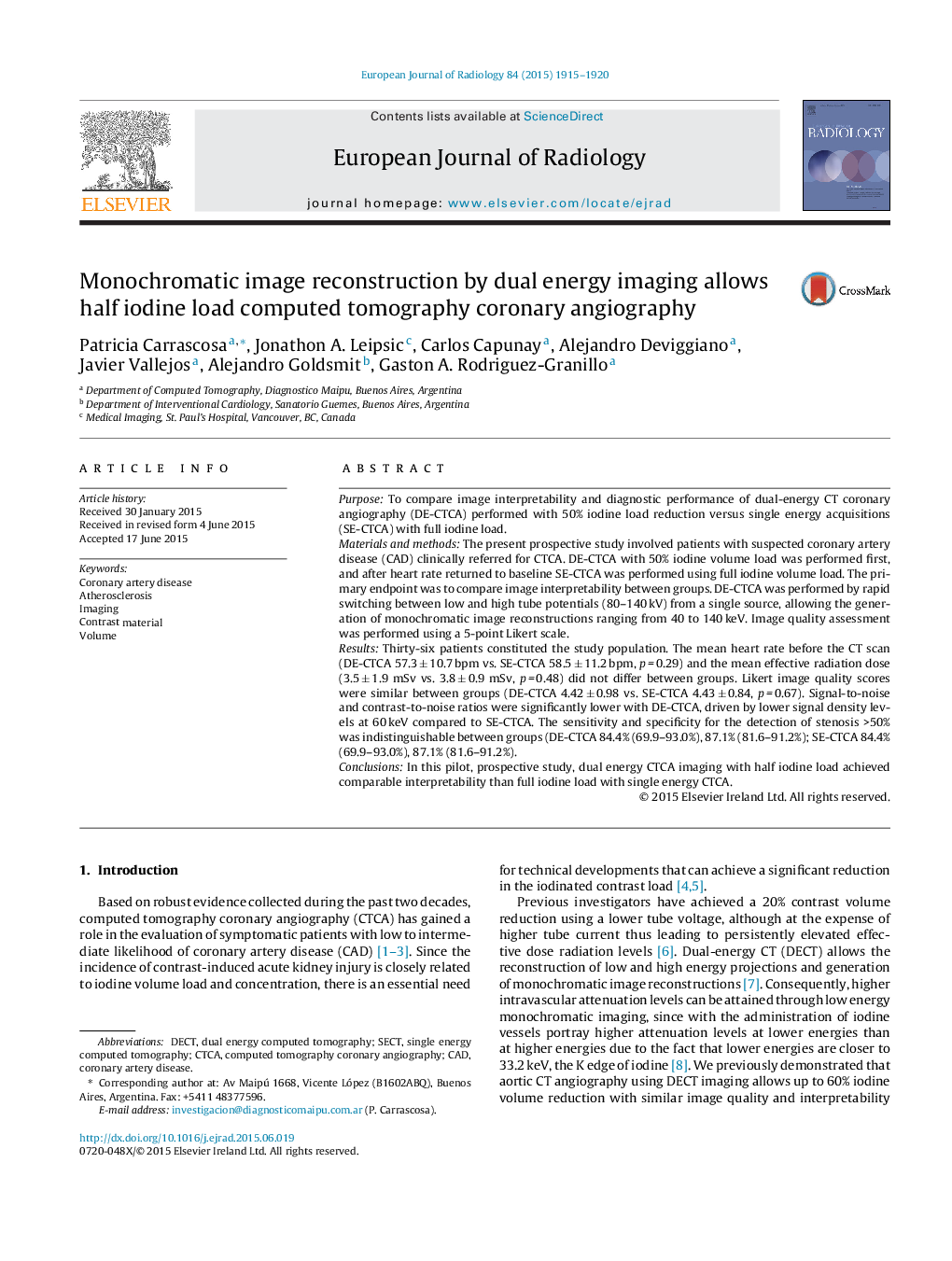| Article ID | Journal | Published Year | Pages | File Type |
|---|---|---|---|---|
| 4225171 | European Journal of Radiology | 2015 | 6 Pages |
•We evaluated the feasibility of half iodine load CT coronary angiography using dual energy imaging.•We included patients with suspected coronary artery disease clinically referred for CT coronary angiography.•Dual energy CTCA allowed 50% iodine volume load reduction, with comparable interpretability.•Iodine volume load reduction did not have an impact on diagnostic performance.
PurposeTo compare image interpretability and diagnostic performance of dual-energy CT coronary angiography (DE-CTCA) performed with 50% iodine load reduction versus single energy acquisitions (SE-CTCA) with full iodine load.Materials and methodsThe present prospective study involved patients with suspected coronary artery disease (CAD) clinically referred for CTCA. DE-CTCA with 50% iodine volume load was performed first, and after heart rate returned to baseline SE-CTCA was performed using full iodine volume load. The primary endpoint was to compare image interpretability between groups. DE-CTCA was performed by rapid switching between low and high tube potentials (80–140 kV) from a single source, allowing the generation of monochromatic image reconstructions ranging from 40 to 140 keV. Image quality assessment was performed using a 5-point Likert scale.ResultsThirty-six patients constituted the study population. The mean heart rate before the CT scan (DE-CTCA 57.3 ± 10.7 bpm vs. SE-CTCA 58.5 ± 11.2 bpm, p = 0.29) and the mean effective radiation dose (3.5 ± 1.9 mSv vs. 3.8 ± 0.9 mSv, p = 0.48) did not differ between groups. Likert image quality scores were similar between groups (DE-CTCA 4.42 ± 0.98 vs. SE-CTCA 4.43 ± 0.84, p = 0.67). Signal-to-noise and contrast-to-noise ratios were significantly lower with DE-CTCA, driven by lower signal density levels at 60 keV compared to SE-CTCA. The sensitivity and specificity for the detection of stenosis >50% was indistinguishable between groups (DE-CTCA 84.4% (69.9–93.0%), 87.1% (81.6–91.2%); SE-CTCA 84.4% (69.9–93.0%), 87.1% (81.6–91.2%).ConclusionsIn this pilot, prospective study, dual energy CTCA imaging with half iodine load achieved comparable interpretability than full iodine load with single energy CTCA.
